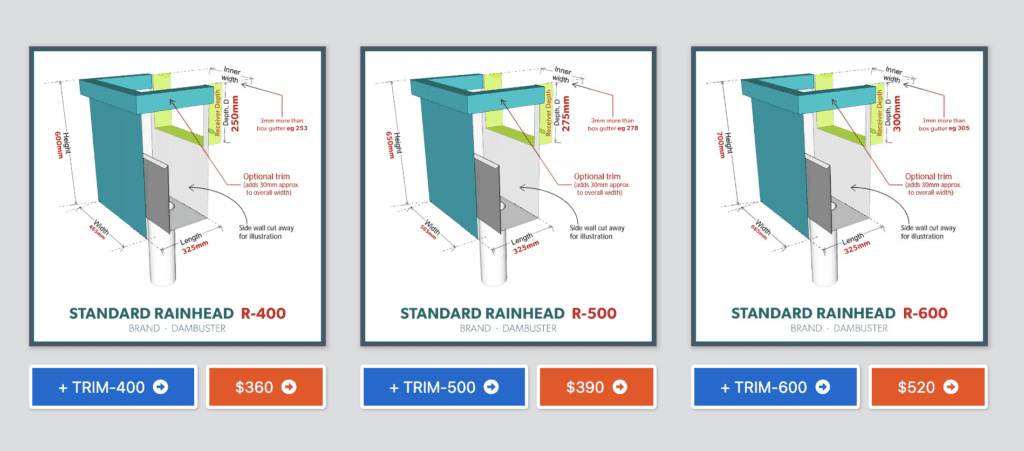Future-Proofing Your Home in Australia: A Comprehensive Guide to Roof Upgrades, Insulation, and Ventilation

Rain Heads Custom Made Shipped Free Australia Wide – Click Here >
Dambuster Rain Heads Shipped Free Australia Wide – Click Here >
Commercial Industrial Roof Vents 300mm-950mm – Click Here >
Eco-Friendly Roofing Insulation Shipped Free – Click Here >
Gutter Sumps Shipped Free Australia Wide – Click Here >
Introduction
As Australia grapples with the unpredictable weather patterns, rising temperatures, and increased humidity, homeowners are left with the daunting task of optimising their living conditions to mitigate these challenges. In this guide, we delve into essential home upgrades, covering topics like metal roof replacement financing options, rainwater head installation service, roof insulation for hot climates, toilet ventilation building codes, Ampelite roof vent warranty, fibreglass roof sheeting vs. polycarbonate, and the best roof vents for humid climates. These are crucial factors to consider for enhancing the energy efficiency, longevity, and comfort of your home.
Metal Roof Replacement Financing Options
Replacing your roof is a significant investment that can run into thousands of dollars. According to Housing Industry Association (HIA) data, roofing projects can cost anywhere from $6,000 to $25,000 in Australia depending on the scope and location. The financial burden of such an undertaking can be alleviated by exploring various financing options available:
- Home Improvement Loans: Several Australian banks like Commonwealth Bank, NAB, and ANZ offer personal loans explicitly designed for home improvements.
- Government Grants: Various state-based schemes such as the Victoria’s Solar Homes Program offer rebates on roofing that also include solar installations.
- Payment Plans: Some roofing companies offer in-house financing options, allowing homeowners to pay in instalments.
Rainwater Head Installation Service
Rainwater heads are an integral part of a well-functioning gutter and downpipe system, crucial for effective stormwater management. A poorly installed rainwater head can result in water damage, which is why service providers like Stratco and Fielders in Australia provide professional installation services meeting the AS/NZS 3500.3:2018 standards.
Roof Insulation for Hot Climates
Given that Australia’s climate varies significantly across its states and territories, appropriate insulation is crucial. While states like Tasmania require insulation that can retain heat, hotter states like Queensland and Western Australia demand a different kind of preparation. Roof insulation with higher R-values is recommended for hot climates. Brands like Bradford and Kingspan offer specialised insulation products conforming to AS/NZS 4859.1 standards, which are effective for hot Australian conditions.
Toilet Ventilation Building Codes
Improper toilet ventilation can lead to poor air quality and health issues. Australia’s National Construction Code (NCC) outlines requirements for mechanical and natural ventilation in toilets. For instance, AS 1668.2-2012 specifies the mechanical ventilation requirements for bathrooms, toilets, and laundries. Compliance is not merely a matter of law but an important factor for the health and comfort of the occupants.
Ampelite Roof Vent Warranty
When it comes to roof vents, warranty periods can vary, with Ampelite offering one of the most competitive warranties in the market. It provides up to 15 years warranty on some of its roof vent products, conforming to Australian Standards AS/NZS 1562.3. Ampelite products are widely accepted for their durability, providing peace of mind for homeowners.
Fibreglass Roof Sheeting vs. Polycarbonate
Fibreglass and polycarbonate are popular options for transparent or translucent roofing. Both materials have their pros and cons:
- Fibreglass: Known for its durability and UV resistance. However, it’s more fragile than polycarbonate and can crack over time.
- Polycarbonate: Offers higher impact resistance and is lighter than fibreglass. However, its UV resistance is generally lower unless treated.
Both materials meet the Australian Building Code’s requirements, but your choice would depend on the specific needs of your home and the local climate.
Best Roof Vents for Humid Climates
In humid climates, like in Northern Territory and Queensland, moisture accumulation is a significant concern. Vents like ridge vents, solar attic fans, and wind turbines are highly effective in these conditions. Brands like Velux and Edmonds offer specialised roof vents designed for humid climates that meet Australian standards like AS/NZS 4740.
Conclusion
In a vast country like Australia with its diverse climates, it’s crucial to consider location-specific building codes and requirements when upgrading your home. From ensuring that you’re aware of financing options for metal roof replacement, to understanding the nuances of toilet ventilation as per Australian building codes, each detail counts in enhancing the longevity and comfort of your home. Warranty considerations like those provided by Ampelite, or material choices between fibreglass and polycarbonate roofing, are not merely decisions but investments in the future habitability of your space. As extreme weather conditions continue to challenge the Australian landscape, there’s no better time than now to make these upgrades, and in doing so, future-proof your home.
References
- Housing Industry Association. (2021). Cost of Home Renovations.
- AS/NZS 3500.3:2018, Plumbing and Drainage – Stormwater Drainage.
- AS/NZS 4859.1, Materials for the thermal insulation of buildings.
- National Construction Code (NCC)
- AS 1668.2-2012, The use of ventilation and air conditioning in buildings.
- AS/NZS 1562.3, Design and Installation of Sheet Roof and Wall Cladding—Plastic.
- AS/NZS 4740, Roof Ventilation – Non-Mechanical.
Remember, the upgrades you implement today are the savings and comfort of tomorrow.
